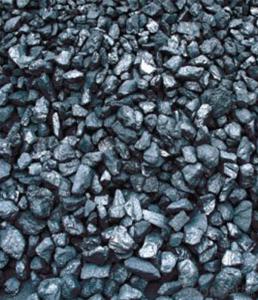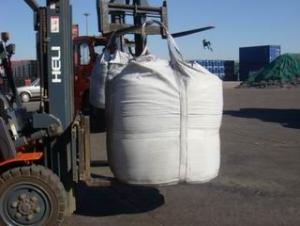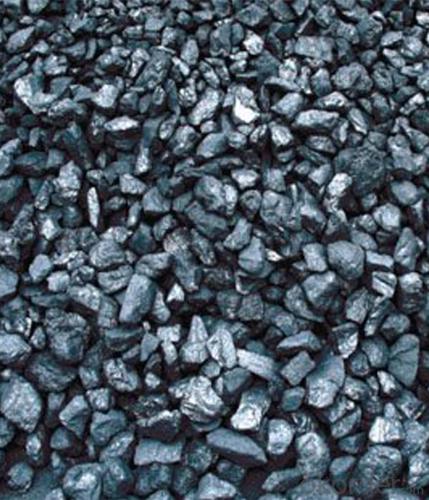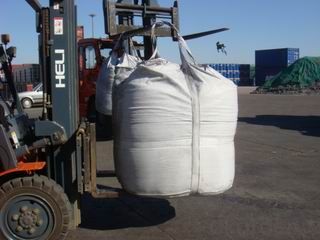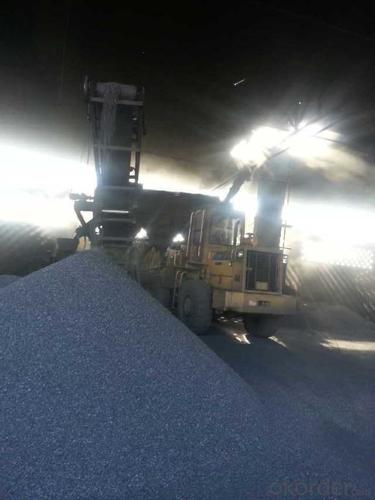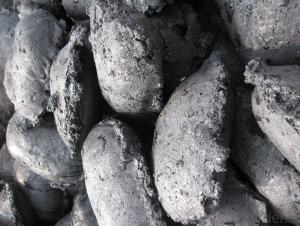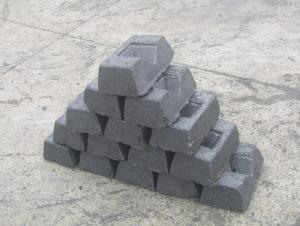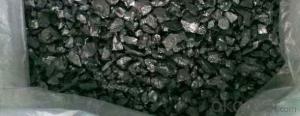FC 90%-95% Gas Calcined Anthracite
- Loading Port:
- China Main Port
- Payment Terms:
- TT OR LC
- Min Order Qty:
- -
- Supply Capability:
- -
OKorder Service Pledge
OKorder Financial Service
You Might Also Like
•Feature:
All of our goods are made in the best quality of world famous Ningxia Taixi Washed Anthracite Coal. All of our products are with High carbon, Low ash, low sulphur, Low Moisture.
•Application:
The Calcined Anthracite Coal/Gas Calcined Anthracite Coal/Carbon Raiser is mainly used in steelmaking in electrical stove, screening water, shipbuilding sandblast to remove rust. It can reduce the cost of steelmaking effectively by replacing the traditional petroleum coke of carburant.Also can improve the Carbon content in steel-melting and Ductile iron foundry.
Package:
IN MT BAGS OR AS BUYER'S REQUEST
General Specification:
PARAMETER UNIT GUARANTEE VALUE | |||||
F.C.% | 95MIN | 94MIN | 93MIN | 92MIN | 90MIN |
ASH % | 4MAX | 5MAX | 6MAX | 7MAX | 8MAX |
V.M.% | 1 MAX | 1MAX | 1.5MAX | 1.5MAX | 1.5MAX |
SULFUR % | 0.5MAX | 0.5MAX | 0.5MAX | 0.5MAX | 0.5MAX |
MOISTURE % | 0.5MAX | 0.5MAX | 0.5MAX | 0.5MAX | 0.5MAX |
Size can be adjusted based on buyer's request.
Pictures of Calcined Anthracite:

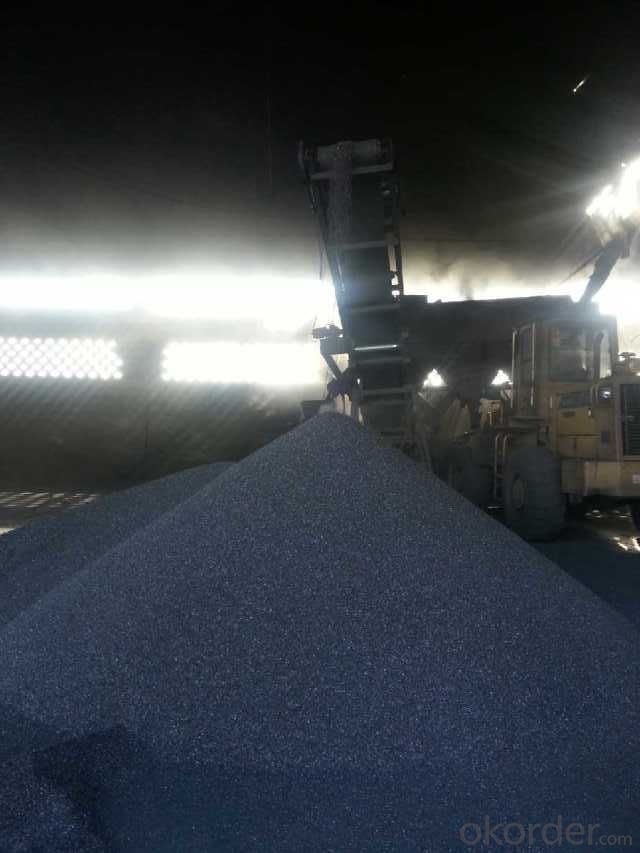
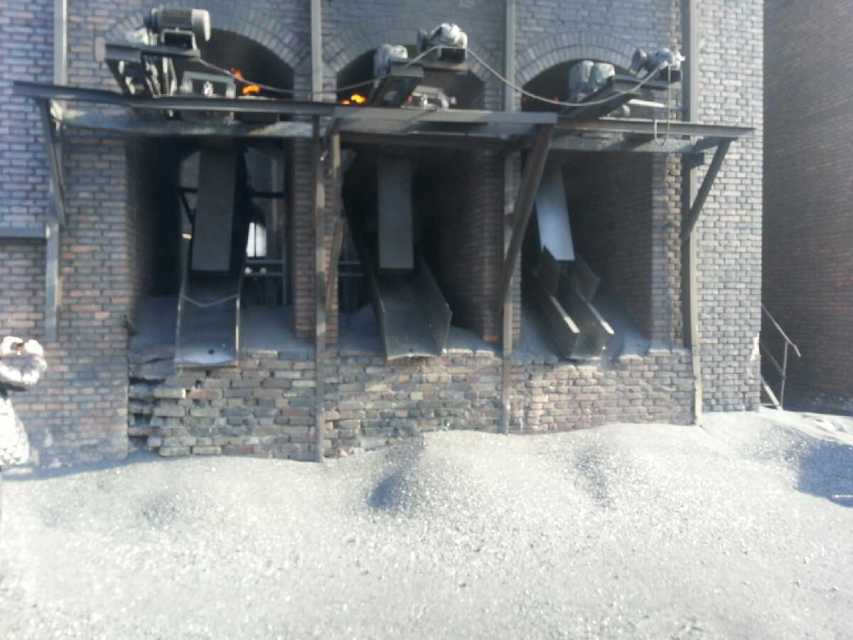

We can supply below materials, please contact us if you areinterested in any of any of them,we will offer our best price as soon as possible:
Calcined Anthracite with fixed carbon from 90% to 95%
Carbon Electrode Paste
Calcined Petroleum Coke
Carbon Electrode Paste
Ferro-Silicon
Ferro Mn
Ferro -P
Cored Wire
- Q: How does carbon impact the structure and function of ecosystems?
- Carbon, as a fundamental element, plays a crucial role in shaping the structure and function of ecosystems. It serves as a building block of life, found in all living organisms, and continuously cycles between the atmosphere, living organisms, and the Earth's surface. The impact of carbon on ecosystems is diverse, both directly and indirectly. To begin with, carbon is a vital component of organic matter, including plants, animals, and decomposing organic materials. It provides the necessary energy and nutrients for the growth and development of organisms. Through the process of photosynthesis, plants absorb carbon dioxide from the atmosphere and convert it into organic compounds, primarily carbohydrates. These compounds serve as a source of energy and building materials for other organisms, forming the basis of the food chain. As a result, carbon is essential for sustaining the productivity and biodiversity of organisms within ecosystems, as it contributes to their structure and functioning. Additionally, carbon influences the physical structure of ecosystems. In terrestrial ecosystems, carbon is stored in vegetation and soils, creating carbon sinks. Forests, for example, store significant amounts of carbon in their biomass and soils. This plays a crucial role in mitigating climate change by absorbing and sequestering carbon dioxide. However, the loss of these ecosystems, due to deforestation or degradation, can release large amounts of carbon back into the atmosphere. This contributes to the greenhouse effect and climate change. In marine ecosystems, carbon is stored in the form of dissolved inorganic carbon, which can affect ocean acidity. The increasing concentration of carbon dioxide in the atmosphere leads to ocean acidification, impacting the growth and survival of marine organisms, particularly those with calcium carbonate shells or skeletons, such as corals and mollusks. Furthermore, carbon influences the functioning of ecosystems through its role in nutrient cycling. Decomposition, the process of breaking down and recycling organic matter, is largely driven by microorganisms that respire carbon dioxide. This process releases essential nutrients, such as nitrogen, phosphorus, and sulfur, back into the soil, making them available for uptake by plants. Nutrient cycling is crucial for maintaining the productivity and nutrient balance within ecosystems. Changes in the availability of carbon can affect the rates of decomposition and nutrient cycling, which, in turn, impact the structure and functioning of ecosystems. In conclusion, carbon is a fundamental element that significantly impacts the structure and function of ecosystems. Its involvement in energy transfer, organic matter formation, nutrient cycling, and climate regulation makes it essential for the sustainability and functioning of all living organisms within an ecosystem. To ensure the health and resilience of ecosystems in the face of environmental changes, understanding and managing carbon dynamics is crucial.
- Q: How is carbon formed?
- Carbon is formed through various natural processes, primarily through the cycle of life and death of living organisms. The formation of carbon starts with the process of photosynthesis in plants, where they use sunlight, water, and carbon dioxide from the atmosphere to produce glucose. This glucose is then converted into other organic molecules, such as carbohydrates, fats, and proteins, which form the fundamental building blocks of all living organisms. When plants and animals die, their remains and waste products are broken down by decomposers like fungi and bacteria. During this decomposition process, carbon is released back into the environment in the form of carbon dioxide or methane gas. Additionally, some of the organic matter may become buried under layers of sediment, where it undergoes a process called fossilization over millions of years. This fossilization process, combined with heat and pressure, transforms the organic matter into fossil fuels such as coal, oil, and natural gas, which are rich sources of carbon. Apart from the biological processes, carbon can also form through geological processes. Volcanic eruptions release carbon dioxide into the atmosphere, and over long periods of time, this carbon dioxide can dissolve in water and combine with minerals to form rocks like limestone. These rocks act as a carbon sink, storing large amounts of carbon over geologic timescales. Overall, carbon is formed and cycled through a complex interplay of biological and geological processes, playing a crucial role in maintaining the balance of carbon in the Earth's atmosphere and supporting life as we know it.
- Q: What are the impacts of carbon emissions on the stability of wetlands?
- Carbon emissions have significant impacts on the stability of wetlands, which are highly sensitive ecosystems. One of the main consequences of carbon emissions is the increase in greenhouse gases, particularly carbon dioxide, in the atmosphere. This leads to global climate change and subsequent alterations in weather patterns, temperature, and precipitation. These changes in climate have direct and indirect effects on wetlands. Firstly, rising temperatures can accelerate the rate of evaporation, leading to a decrease in water levels within wetlands. This can lead to the drying out of wetland habitats, disrupting the delicate balance of species that rely on these areas for survival. As wetlands dry up, the plants and animals that depend on them for food, shelter, and breeding grounds are threatened. Additionally, increased carbon emissions contribute to sea-level rise, which poses a significant threat to coastal wetlands. Rising sea levels can cause saltwater intrusion into freshwater wetlands, leading to salinization of the soil and negatively impacting the vegetation and organisms that inhabit these areas. This intrusion also disrupts the delicate balance between freshwater and saltwater, affecting the diverse ecological functions provided by wetlands, such as water filtration, nutrient cycling, and flood control. Furthermore, carbon emissions contribute to the acidification of water bodies, including wetlands. The absorption of excess carbon dioxide by water leads to a decrease in pH levels, making the water more acidic. Acidic water can harm the plants, animals, and microorganisms in wetlands, affecting their growth, reproduction, and overall survival. This disruption in the wetland ecosystem can have cascading effects on the entire food web and biodiversity of these areas. Overall, carbon emissions have a profound impact on the stability of wetlands. The alteration of climate patterns, sea-level rise, and acidification of water bodies are all consequences of carbon emissions that threaten the delicate balance and ecological functions of wetlands. Recognizing the importance of wetlands and effectively mitigating carbon emissions is crucial for preserving these vital ecosystems and the myriad of benefits they provide, including flood mitigation, water purification, and habitat for numerous plant and animal species.
- Q: What are the impacts of carbon emissions on human health in developing countries?
- Carbon emissions have significant impacts on human health in developing countries. These emissions, primarily from the burning of fossil fuels and deforestation, contribute to the worsening of air quality, leading to a range of health problems. One of the most immediate and visible impacts is respiratory diseases. High levels of carbon emissions result in the release of harmful pollutants such as particulate matter and nitrogen dioxide. These pollutants can irritate the respiratory system and exacerbate existing conditions like asthma and bronchitis. In developing countries where access to healthcare may be limited, these respiratory diseases can be particularly detrimental, leading to increased mortality rates. Furthermore, carbon emissions contribute to climate change, which has indirect effects on human health. Rising temperatures and changing weather patterns can lead to the spread of vector-borne diseases like malaria and dengue fever. Developing countries often lack the necessary infrastructure and resources to effectively combat these diseases, resulting in increased rates of infection and mortality. Moreover, carbon emissions contribute to the formation of ground-level ozone, a harmful air pollutant. Exposure to high levels of ozone can cause respiratory problems, cardiovascular issues, and even premature death. Developing countries, with their limited access to healthcare and vulnerability to extreme weather events, may experience higher rates of illness and mortality due to ozone exposure. Additionally, carbon emissions contribute to the acidification of oceans, which harms marine ecosystems. This, in turn, affects the availability and quality of seafood, a vital source of nutrition for many developing countries. Impaired access to nutritious food can lead to malnutrition and various health issues, especially among vulnerable populations such as children and pregnant women. In conclusion, carbon emissions have severe impacts on human health in developing countries. The release of pollutants from burning fossil fuels and deforestation leads to respiratory diseases, the spread of vector-borne illnesses, ozone-related health problems, and nutritional deficiencies. These health impacts highlight the need for developing countries to prioritize sustainable development and transition to clean energy sources, while also emphasizing the importance of international cooperation to address this global issue.
- Q: What are the consequences of increased carbon emissions on forest ecosystems?
- Increased carbon emissions have a range of negative consequences on forest ecosystems. Firstly, higher levels of carbon dioxide in the atmosphere contribute to global warming, leading to higher temperatures and altered precipitation patterns, which can negatively impact the growth and health of forest plants. Additionally, increased carbon dioxide levels can stimulate the growth of invasive plant species, leading to competition and reduced biodiversity. Moreover, carbon emissions contribute to ocean acidification, which can harm marine ecosystems that are interconnected with forests. Lastly, increased carbon emissions can intensify the frequency and severity of wildfires, posing a significant threat to forest ecosystems and their ability to regenerate.
- Q: Are carbon cells the same as alkaline batteries?
- Carbon battery is not only suitable for the flashlight, radios, tape recorders, cameras, semiconductor, electronic clocks, toys and other fields, but also for national defense, scientific research, telecommunication, navigation, aviation, medicine, etc. in the national economy. Carbon battery is mainly used for low power electrical appliances, such as watches, wireless mouse such as electrical appliances should use alkaline batteries, such as the camera, the camera also hold some basic, it needs to use nimh.Alkaline batteries, also known as alkaline dry cells, alkaline manganese dioxide batteries and alkaline manganese batteries, are among the best in the range of zinc manganese batteries. The utility model is suitable for large discharge capacity and long time use.
- Q: What are the consequences of increased carbon emissions on indigenous communities?
- Increased carbon emissions have significant consequences on indigenous communities. Firstly, these communities often rely on the land and natural resources for their livelihoods, so environmental degradation caused by carbon emissions can directly impact their ability to hunt, fish, and gather food. Additionally, climate change resulting from carbon emissions leads to more frequent and intense natural disasters, such as hurricanes and droughts, which can destroy homes and infrastructure in indigenous communities. Moreover, the loss of traditional knowledge and cultural practices associated with the changing environment can have profound social and psychological impacts on indigenous peoples. Overall, increased carbon emissions exacerbate existing inequalities and vulnerabilities faced by indigenous communities, threatening their way of life, well-being, and resilience.
- Q: How does carbon impact the formation of smog?
- Carbon plays a significant role in the formation of smog, particularly in the form of carbon monoxide (CO) and volatile organic compounds (VOCs). When fossil fuels are burned, such as in vehicle engines or power plants, they release carbon monoxide into the atmosphere. Carbon monoxide is a colorless and odorless gas that can react with other pollutants in the presence of sunlight to form ground-level ozone, a key component of smog. Furthermore, carbon-based compounds known as volatile organic compounds (VOCs) are also emitted from various sources, including industrial processes, gasoline vapors, and chemical solvents. These VOCs can undergo chemical reactions in the presence of nitrogen oxides and sunlight to create ground-level ozone as well. Both carbon monoxide and VOCs contribute to the formation of smog by reacting with nitrogen oxides (NOx) in the presence of sunlight. This chemical reaction forms ground-level ozone, which is a primary component of smog. Ozone is harmful to human health and the environment, and its formation is exacerbated by the presence of carbon emissions. Reducing carbon emissions is crucial to mitigating the formation of smog. Transitioning to cleaner and more sustainable sources of energy, such as renewable energy, can help decrease the amount of carbon released into the atmosphere. Additionally, implementing stricter emissions standards for vehicles and industrial processes can also contribute to reducing carbon emissions and consequently limit the formation of smog.
- Q: What are the main sources of carbon emissions?
- Human activities, particularly the burning of fossil fuels like coal, oil, and natural gas, are primarily attributed as the main sources of carbon emissions. When these fossil fuels are combusted for electricity generation, transportation, and industrial processes, significant amounts of carbon dioxide (CO2) are released into the atmosphere. Deforestation and land-use changes also play a major role in carbon emissions. Clearing or burning forests leads to the release of carbon stored in trees and vegetation as CO2, contributing to greenhouse gas emissions. Moreover, the decrease in forests reduces their ability to absorb carbon dioxide through photosynthesis, worsening the issue. Substantial carbon emissions are also generated by industrial processes such as cement production and chemical manufacturing. Cement production, in particular, produces a significant amount of CO2 due to the chemical reactions involved. Agriculture is another significant source of carbon emissions, primarily through the release of methane (CH4) and nitrous oxide (N2O). Livestock farming, especially cattle, produces methane through enteric fermentation and manure management. Nitrous oxide is released from the use of synthetic fertilizers and manure in agricultural practices. Lastly, waste management and disposal contribute to carbon emissions. Landfills, where organic waste decomposes, release methane gas. Additionally, the incineration of waste also releases CO2 and other greenhouse gases into the atmosphere. To reduce carbon emissions, it is vital to address these primary sources. This can be achieved through transitioning to cleaner energy sources, promoting sustainable land-use practices, improving industrial processes, adopting more sustainable agricultural practices, and implementing effective waste management strategies.
- Q: What are the different types of carbon-based air pollutants?
- There are several types of carbon-based air pollutants, including carbon monoxide (CO), carbon dioxide (CO2), volatile organic compounds (VOCs), and black carbon (BC).
Send your message to us
FC 90%-95% Gas Calcined Anthracite
- Loading Port:
- China Main Port
- Payment Terms:
- TT OR LC
- Min Order Qty:
- -
- Supply Capability:
- -
OKorder Service Pledge
OKorder Financial Service
Similar products
Hot products
Hot Searches
